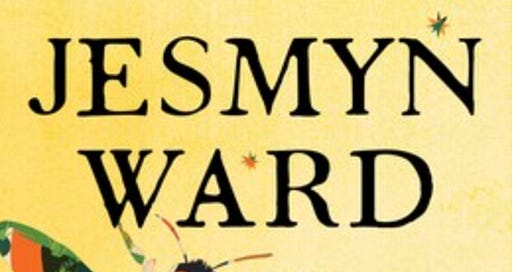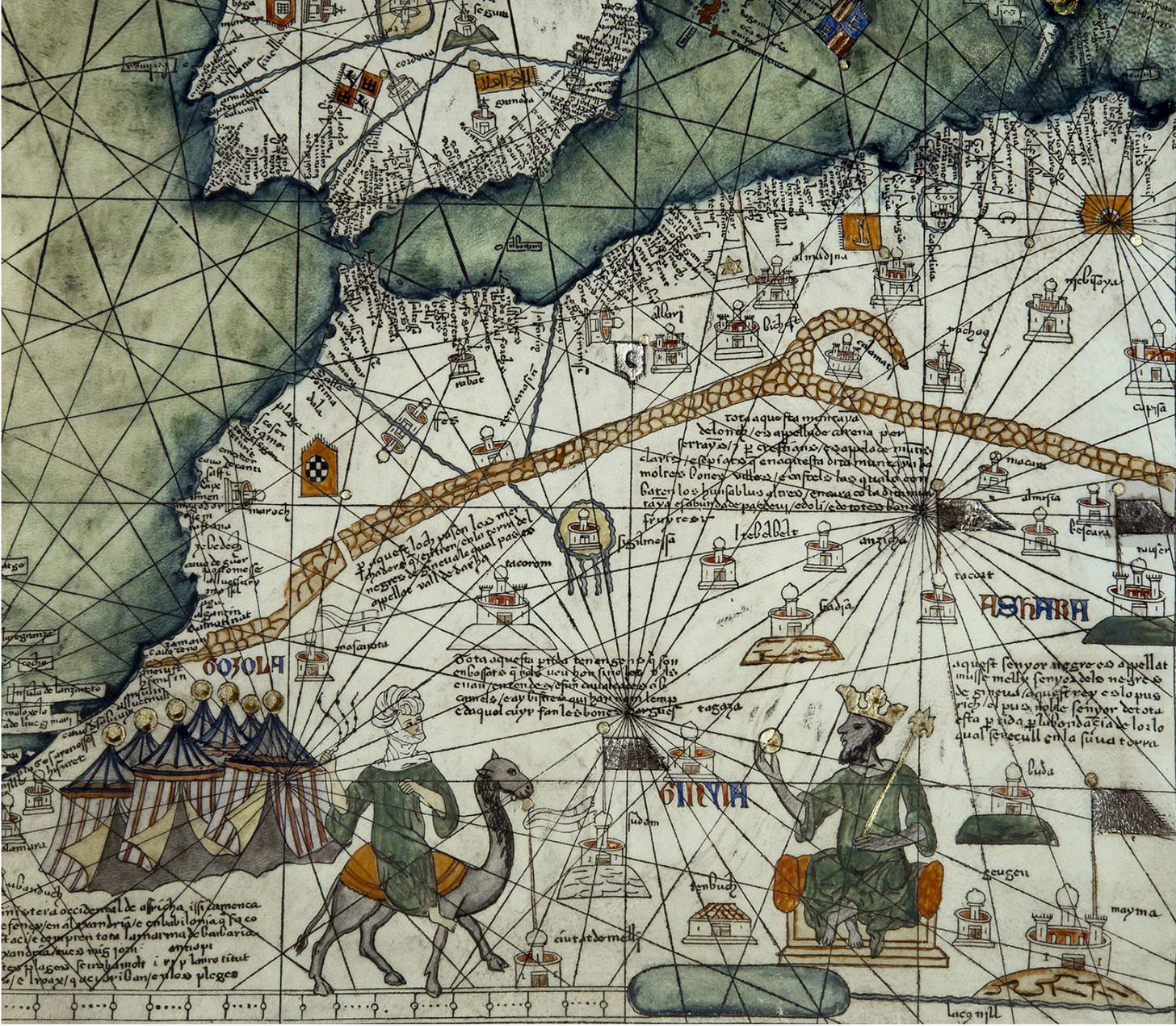The fact that my own “free” country once enslaved human beings has been appalling and incomprehensible to me since I was a child. Over the years, I’ve read countless books, watched films and television series, and visited historical sites, trying understand how and why this happened and what it had been like to live as a slave.
Nothing made me feel the power, brutality, and utter indifference of white slave holders or the suffering of the black men, women, and children whose lives they held in their hands as Jesmyn Ward’s Let Us Descend.
Its main character Annis was conceived in rape, born into slavery on her white father’s Carolinas rice plantation. Her mother Sasha, conceived in forbidden true love, was carried across the sea in the womb of Annis’ grandmother Mama Asa, once a woman warrior.
Annis works in the house with her mother, where her duties include serving her two white half-sisters, for whom she feels both envy and distaste. Eavesdropping one day, she hears their tutor telling them the story of an ancient Italian man walking down into hell and observes, “The hell he travels has levels like my father’s house.”
Annis adores her mother, who teaches her how to forage for food in the forest, trains her to fight in self-defense, tells her Mama Aza’s stories, and assures her that the world is teeming with spirits unknown to white folks.
“When you ask, spirit answer,” she says.
But no spirits answer when the Georgia men appear one day and the sire points at Sasha as one to be taken and sold. When one of the men grabs her mother, Annis wrenches her away and the three of them tussle until a warning gunshot rings out. Annis falls to the ground, wrapping herself around her mother’s legs, holding on as Sasha is dragged away. In the aftermath of this loss, Annis can barely work, she can’t sleep, can’t see anything or anyone clearly. In time she finds love and comfort in her friend Safi, but when Annis’ father enslaver observes them together, he adds them to the next cargo of slaves headed for the auction block in New Orleans.
Bound by rope in a long line of women, staggering through the forest on bruised and bleeding feet, the words of her sisters’ tutor come to her: “Let us descend and enter this blind world.”
One night, sleepless on the hard ground, Annis sees a white-wreathed woman in the shadows. But in the morning, she’s gone. Soon after, Safi disappears and Annis tries to keep her grief at bay, remembering Mama Aza’s stories.
When the white-wreathed woman appears again, she calls Annis by her true name, the one her mother gave her: Arese. This makes Annis think she may actually be her mother. But Sasha never walked like this woman, “gliding almost, shoulders arced back.” And her clothes aren’t actually clothes.
“What I took for silver thread woven into the fabric, glinting in the firelight, is electric, lightning slithering over her garments,” Annis says. “Her skirts are not silk, not cotton spun fine, but are obscure and full as high summer clouds towering in the sky. What I thought was a cape is tendrils of fog draped over her shoulders, yielding curtains of rain.”
“Call me Asa,” the spirit woman says.
Is she the spirit of Mama Asa, Annis’ grandmother? We never really know. But what we do know is that Sasha was right about the world teeming with spirits from the beyond. Once Spirit Asa appears, others show themselves. They are of earth, water, myth, and history; benevolent, manipulative, soothing, and cruel.
Are they and the world beyond the solid world we live in real? If so, is it Annis’ suffering that cracks her mind open to receive them and their singing?
Annis’ long journey to New Orleans is every bit as harrowing—and worthy of reading—as Dante’s journey to hell because it’s so important for us to acknowledge that our country was built on the backs of millions of black people during its long embrace of slave labor and how this brought us to where we are now.
Coincidentally, I began reading Let Us Descend as I was preparing to work with a high school world history class about to begin a unit on the slave trade. I was there thanks to an Indiana Arts Commission Fellowship for Creative Teaching grant that matched artists with teachers who wanted to be more creative teachers. I had the great good fortune of being matched with Franklin Oliver, a history teacher with whom I felt an instant affinity. In our first conversation, we cooked up enough ideas to—well, I could have been there every day of the semester and it wouldn’t have been enough time. Eventually, we calmed down to what seemed possible.
We’d use writing and how you have to think as a writer to extend students’ understanding of history beyond its big names, its wars, its sweeping effects by considering the lives of “regular” people whose existence was defined by the era in which they lived. We’d encourage them to see that, when you dig beneath the surface, history is a compelling story.
I dug into their first unit on Early Islam, fascinated with that world, some contemporary issues falling into place as I learned how Islam started and made its way to modern times. They studied Mansa Musa, who spearheaded the spread of Islamic law and civilization in western Africa—the richest man who ever lived. (Yes, richer than Elon Musk, Bill Gates, Jeff Bezos—all those guys.)
So I studied Mansa Musa, too—and the “regular”people in his orbit, particularly the 60,000 of them who accompanied him on his pilgrimage from Timbuktu to Mecca in 1324. I had great fun putting together a Power Point to generate conversation about who those people were and how they spent their days. Who were they? What work did they do? What objects surrounded them? What was their family life like? What about their lives could they control? What did they know and not know that we know now? What they had to offer Mansa Musa that nobody else did? What were their secret powers?
We talked about voice, what the way a person speaks reveals about his place in life. Choose a person who might have been in Mansa Musa’s caravan and write about something that happened along the way in that person’s voice, I said.
They did, using details we’d talked about in class.
A few weeks later, I talked about what European travel taught me about history, moments of visceral understanding—like the time my British cousin took me to Silchester, where we picnicked along the remnants of the wall of a Roman city buried beneath. Later, in the little museum, he showed me a photograph taken from the air during the autumn that revealed the grid of the Roman city in the drying fields.
Faulkner said it: “The past is never dead. It's not even past.”
In that little Silchester museum, I felt it.
The past is always there, beneath us, affecting everything. We ignore it at our own peril.
Which is true for countries, too—our country, in its persistent refusal to deal honestly with how slavery and its aftermath brought us to the racial strife we’re suffering today.
Weirdly, Mr. Oliver’s classes were just finishing the unit on the Reformation when I stated thinking about my next visit. Yikes! How could Martin Luther and his 97 Theses be connected to the slave trade in an interesting way? Married to a very lapsed Missouri Synod Lutheran and having had a short stint with that bunch myself, not to mention having seen the whitewashed interiors of cathedrals in the Netherlands, victims of the Reformation, I didn’t think much of Martin Luther. Yet when I read his 97 Theses, I realized that they were, essentially, about unfairness. I was struck by how sensible they were.
Long story short. I read them again, noting that the Theses could be categorized as Done Deals (what church doctrine promised believers), Observations and Judgments, Directives, and Questions.
Huh, I thought. Why couldn’t those categories be applied to argue the unfairness of any issue? Slavery, the slave trade, for example. As church doctrine defined Luther’s Done Deals, the Declaration of Independence could be the basis for an argument against slavery and the slave trade.
Mr. Oliver’s classes and I looked at images of slavery and the slave trade to help us imagine what life had been like for its victims. The building where they’d been held; shackled; the long, dark corridor they walked when it was time to board the ship; the door at the end framing the sea. A “map” of the lower deck of a slave ship, people shackled so closely they touched; an auction block in New Orleans.
And Thomas Jefferson’s home, Monticello, where, after his death, his estate sold more than one hundred of his slaves, some from the West Portico of that house.
We looked at an excerpt of “The Declaration of Independence,” authored by Jefferson, to establish the promises it made to people in America. Not one of which was granted to the black people living in our country as slaves.
A spirited discussion ensued.
I don’t know how Mr. Oliver’s students felt about our time together, but I loved it.
I loved being with teenagers again.
I loved digging into aspects of history I probably wouldn’t have pursued otherwise—what I learned, how it changed me.
I loved being with Mr. Oliver, an extraordinary teacher and human being. He should be cloned.
Seriously.
I loved knowing the answer to a question on the Saturday NYT history quiz: Mansa Musa! I’d never had known it but for Mr. Oliver and his students.
I thought we’d do more writing over the course of the semester, which is what I usually do with students. Instead, we did more creative thinking.
What if? What if? What if?
We imagined history.
To some, “imagine” and “history” might seem contradictory. But how can we create a better, more humane world than the past if we can’t imagine the lives of the people who suffered the past’s injustices?
I hope Mr. Oliver’s students came away willing to consider this.
I hope they believed me when I said good historical fiction is invaluable to our understanding of history. And if they did, I hope they’ll read Jessmyn Ward’s Let Us Descend.









What fun you had with the students! I would also love this experience. Thanks for yet another book to consider reading. I too have read many on the topic of slavery—all different and all valuable learning. I love historic fiction.
Same here!